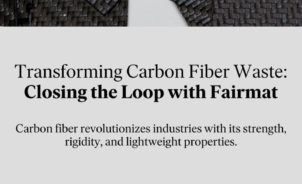What will you find in this article?
- European Commission’s take on ‘Greenwashing.’
- Composites industry and sustainable development.
- Green labeling in the composites industry.
The EU washing-off Greenwashing
150 ‘green’ claims on packaging and advertising products were studied — more than half of which were found to be “vague, misleading and unfounded”, according to the Commission experts.
European Commission adopted a new proposal targeting greenwashing in March 2023, and perhaps the industries might soon need a reality check.
The proposal — “A Directive on Green Claims,” aims to tightly govern the environmental labeling schemes.
It will require companies to provide verifiable claims made about environmental aspects or the performance of their products — like how long they last and if they can be repaired or not.
The underlying idea of the parent directive was to enable the consumer to make sustainable decisions and protect them from possible misleads.
The composites industry has always made a point about how composites, among industrial materials, are the cornerstone of decarbonization.
Research has confirmed that composites have consistently outperformed traditional materials in terms of sustainability, and without exceptions.
Nonetheless, to protect our customers’ rights and to maintain their trust — it is time that we start backing our claims like we always have, but in a way that is understandable for anyone and everyone.
And, even if composite materials are well-aligned with the consumer’s eco-friendly needs or with the upcoming legislations — we, as an industry, should go that extra mile and strive for eco-innovation and circularity.
Contribution to Sustainable Development
Consumers have been sensitive to environmental issues, and investors are keen on becoming associated with green brands. So, the communication of environmentally and socially responsible activities can only help the company to remain relevant to its community.
Naturally, Corporate Social Responsibility (CSR) has been the latest focus of our industry for both right and unfortunate reasons. Right is when the actions are responsible and for the community, and unfortunate — when misused or exploited.
Commitment to Sustainable Development is non-negotiable — but if its incorporation in the CSR practices and, in particular, its communication to different stakeholders is insufficient or incorrect — then we are at risk of ‘Greenwashing.’
Even if the composite industry doesn’t fancy using eco-labels like the food industry, the use of ‘green’ tags is now definitely a known practice — mostly in its true sense and occasionally a little misleading.
‘Green’ is now synonymous with a lot of things — plant-based resins, natural fibers, biocomposites, recycled composites, and more that keep coming to the fore of the industry.
While all these green materials are labeled rightly so — there’s very little standardized, legible data for the consumers to understand how each product impacts the environment or to compare them.
Green labeling in composites
European Commission’s Green Deal aims for climate neutrality by 2050 and depends in part on the mobilization of the energy-intensive sectors.
The majority of composite materials’ environmental impact sits well with the Green Deal philosophy because they are inherently greener than the materials they replace — like steel or aluminum.
But by generalizing, knowingly or otherwise, we are making room for Greenwashing.
Far too many ‘green’ combinations are possible in composites with differing properties and environmental impact of each.
A quick refresher on composites: a combination of 2 or more materials with different properties are combined to produce a ‘composite material’ with improved properties. Generally, composites are made of 2 main components — the matrix and the reinforcements.
Wood, a combination of cellulose fibers (reinforcement) and lignin (matrix), is an example of natural composite material.
Composite structures offer various possibilities for low-energy design.
Most commercial composite materials use polymer matrix (or resin). Which, when reinforced with fiber (glass, carbon fiber, etc.), form composite materials called Fiber-reinforced polymer/plastic (FRPs). These composites have high durability (could last for a century), are low maintenance, and result in lower energy consumption throughout a product’s life.
In general, commercial composites have a long service life and don’t easily degrade. This property becomes counterproductive when their use is short-lived — like in the packaging application. Hence, the demand for bio-degradable composites or bio-composites.
Bio-composites are a combination of natural fibers and matrix material, which can either be biodegradable, non-biodegradable, or synthetic.
Clearly, some bio-composites tend to be ‘hybrid’ (they use synthetic matrix), and therefore, ‘bio’ labels don’t necessarily mean biodegradable.
Alternatively, plant-based ‘green’ polymers and resins are also being developed for real-life applications.
Although composites made from green resins and natural fibers derived from renewable resources can potentially replace a percentage of petroleum-based conventional composites — it most certainly will not ‘green’ the composite industry altogether.
The composites industry employs a great deal of ‘greens’ – green technology, green resins, fibers, composites, and so on, but it’s just one side of the story.
Therefore, ‘green’ composites don’t imply they are 100% made of natural resources or are 100% biodegradable.
Despite promising labels, sustainability is not all-inclusive and remains a subjective concept in the industry.
The industry hasn’t been skeptical about green labeling until now because green composites are in the early stages of development — but the European Commission’s new proposal is some food for thought.
Although composites are driving the transition to a carbon-neutral world, their manufacturing and end-of-life carry their own environmental cost. And, to fully exploit the sustainability benefits of composites, it is imperative that we work on improving their entire life cycle – the making, the use, and the end of use.
“The future development of the composite industry is “green” and optimistic yet highly dependent on the rapidly developing recycling technology and implementation of Circular Economy (CE) and sustainable thinking.” — Journal of Composites Science
Fairmat has carried out a Simplified Life Cycle Assessment (LCA) of carbon fiber composite materials and their recycling process as a stepping stone.
Read Fairmat’s Simplified LCA Report.




